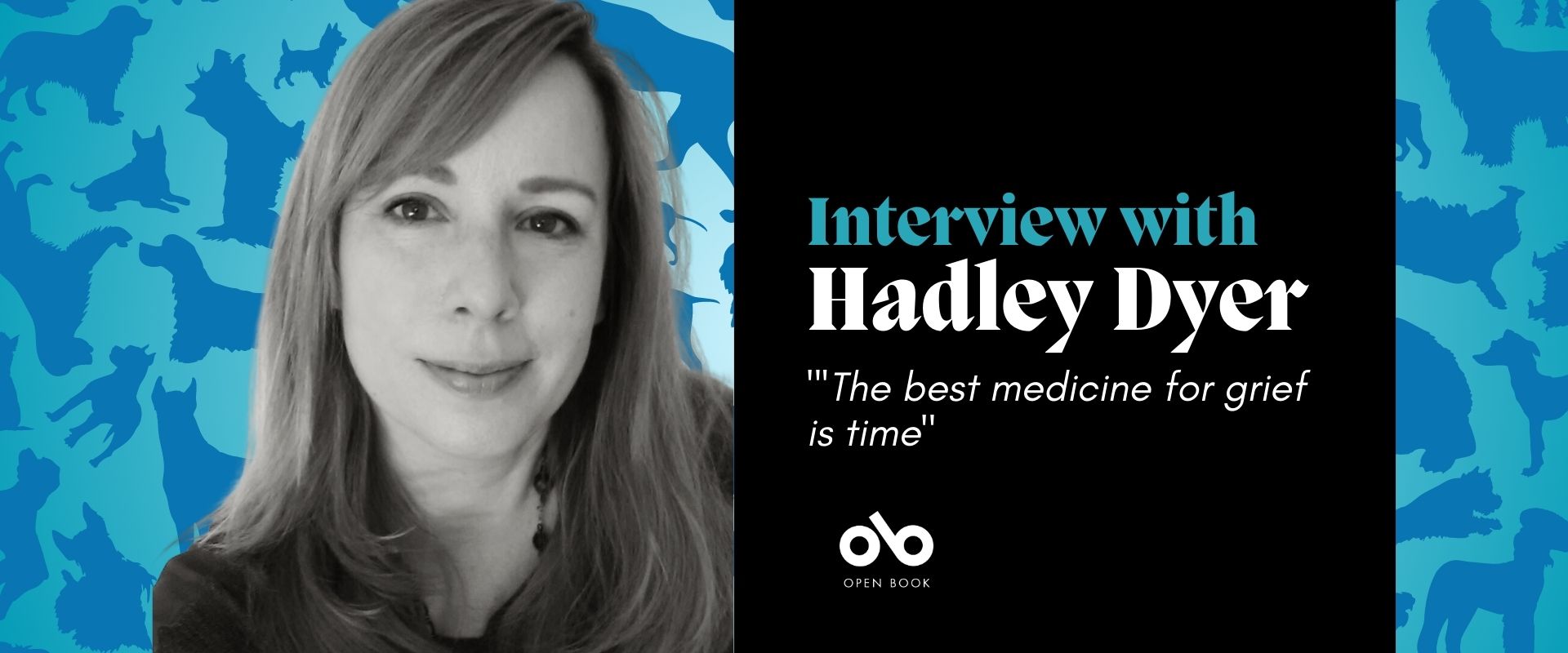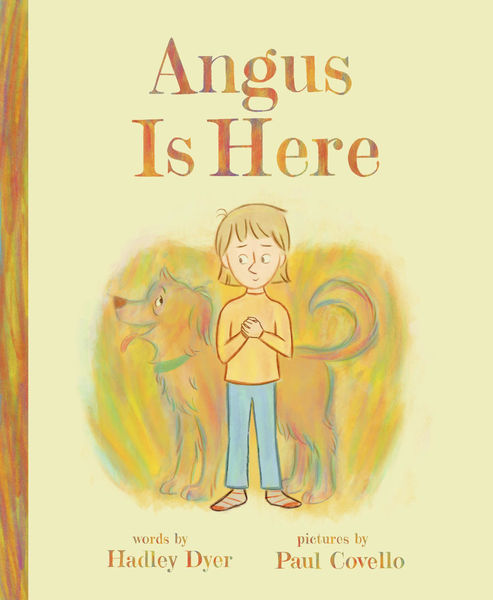For the Love of Dog – Hadley Dyer Creates a Smart, Moving Picture Book to Help Kids Grieve Animal Friends
Veteran children's book editor and writer Hadley Dyer has teamed up with beloved kids book creator Paul Covello (known for his Toronto ABC and Canada ABC, amongst other titles) to create a book that meets kids where they are around a difficult but influential childhood milestone: losing a pet – a loss that is often a child's first experience of death and grief.
Angus is Here (Annick Press) is a love letter to our four-legged family members, following a child whose beloved dog, the titular Angus, has passed away. But even when he is gone, the memories—and the love—remain, as the child recalls Angus' happily waving tail, his soft fur, his boundless energy.
The huge (and for many caregivers, intimidating) subjects of what to do with love when its object is gone, how to navigate grief, and how to process the permanence of loss are dealt with gently and wisely by Dyer, making the book a gift to anyone helping a child get through a loss like the narrator's.
She joins us today to talk abut Angus is Here, and her own, beloved late canine pals, including the all-too-relatable moments of thinking you see, from the corner of your eye, a pet who has passed. She tells us about the idea of the "gift book" that sometimes happens to writers, and shares a hilariously sassy response about her feelings on the first draft stage of the publishing experience.
Open Book:
Tell us about your new book and how it came to be.
Hadley Dyer:
When my friend’s dog died, she asked if I would write a picture book about coping with the loss of a pet because she was having trouble finding something appropriate for her young children. Her kids understood the basic concept of death, more or less, but grief was another matter. No heaven stuff, she specified.
Now, my own dog had always had an active social life. He’d take off to the beach or a cottage with friends while I stayed at home, usually scrambling to finish a manuscript. So even before he died, I knew about this phenomenon where you keep thinking you’re seeing a pet that’s not there. A flicker in the corner of your eye, a shadow that turns out to be something else. I’d get out a knife to chop vegetables and automatically look down, expecting to see a dog had materialized by my side. This would be part of the grieving process, I was sure.
I jotted a few notes, then put the idea away until my dog died a few months later. Sure enough, he seemed to be everywhere. I opened my notes file to add a few fresh thoughts and ended up writing the story.
OB:
Is there a message you hope kids might take away from reading your book?
HD:
Grief is something you have to live with for quite a while, passing through periods that are harder and easier. Moments of happiness are a relief, but they can trigger guilt or the worry that you’re starting to forget the loved one who passed away. Of course, this is all totally normal.
Your CanLit News
Subscribe to Open Book’s newsletter to get local book events, literary content, writing tips, and more in your inbox
What we try to show in Angus is Here is that the best medicine for grief is time. That’s why illustrator Paul Covello and I start the story after Angus, the family pet, has died and a bit of time has passed—long enough for the grass seeds planted over his grave to have sprouted. The unnamed protagonist is still getting used to the idea that Angus is gone forever, taking a detour into denial before heading down the path towards acceptance and feeling better.
OB:
Did the book look the same in the end as your originally envisioned it when you started working, or did it change through the writing process?
HD:
As an editor, I’ve often observed something I call “the gift book.” That’s when an author conceives a book idea then just sits down and writes the thing. No major obstacles or angst or shopping around for a new profession. The writing is still hard work, but it doesn’t fight you, and the finished book turns out fairly close to how you imagined it. Angus Is Here was my gift book.
That doesn’t mean we published my first draft. I shared the manuscript with Kathy Stinson—lucky me, having access to one of Canada’s best picture book authors—who made the important suggestion that I hold off a little longer on the revelation that Angus has died. Rick Wilks, publisher of Annick Press, generously extended the page count of the book so I could add more memories of Angus to help the reader appreciate what the protagonist has lost. And there were smaller tweaks as Paul’s illustrations developed and in response to comments from my writing group and editors Katie Hearn and Kaela Cadieux. As they say, it takes a village—especially with a picture book, which is a truly collaborative effort.
By the way, it’s a mixed blessing when a gift book is the first one you publish because it can set up unreasonable expectations for the writing and publishing process in the future. It may never be so easy again!
OB:
How do you cope with setbacks or tough points during the writing process? Do you have any strategies that are your go-to responses to difficult points in the process?
HD:
Sometimes, I have to employ every trick in the book just to face the problem. I’ll set timers for short periods of uninterrupted work time. Block the internet to eliminate temptation. Write with friends, in person or over Zoom. Undertake countless exercises—of my own invention or recommended by writers I admire—to explore possibilities for plot and character. Pace the house, muttering. Write tens of thousands of words in a notes file, trying to explain the book to myself.
When I’m really stuck, I’ll seek help from the other members of my beloved writing group: Kathy Stinson, Lena Coakley, and Paula Wing. We’ve been sharing work, frustrations, and a lot of laughs for more than twenty years. Asking for feedback on an unfinished manuscript takes courage and trust, but it’s tremendously helpful to the work and your mental health when the going gets tough.
OB:
What's your favourite part of the life cycle of a book? The inspiration, writing the first draft, revision, the editorial relationship, promotion and discussing the book, or something else altogether? What's the toughest part?
HD:
There’s a minority of writers out there who love writing the first draft of a book. They probably also like baby corn and humidity. I’m with those who find the first draft—and substantive revisions requiring brand new material—to be agonizing. I much prefer the first flush of inspiration, when anything is possible, and love line editing most of all. By “line editing,” I mean the endless tinkering to take the prose from clunky, skeletal, or crude to something resembling a reasonably intelligent human voice.
_______________________________________________
Hadley Dyer is the author of More Than Money and other acclaimed titles for young readers. She has worked in the children’s book industry for more than twenty years and with multiple organizations that promote literacy and reading. She lives in Toronto.





